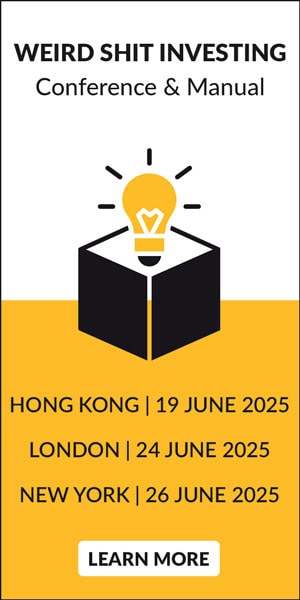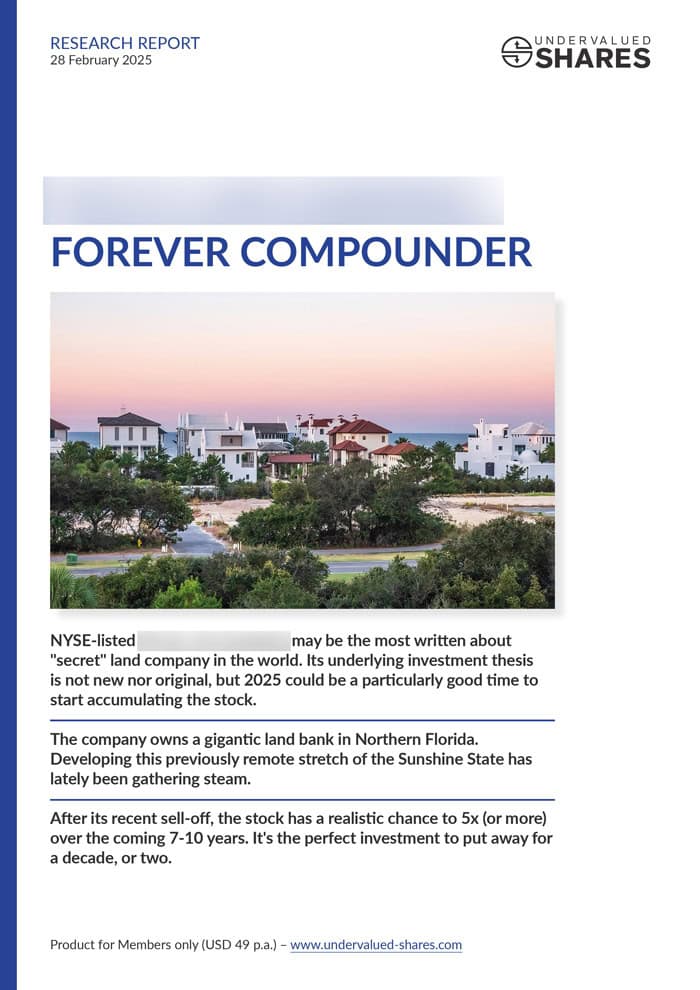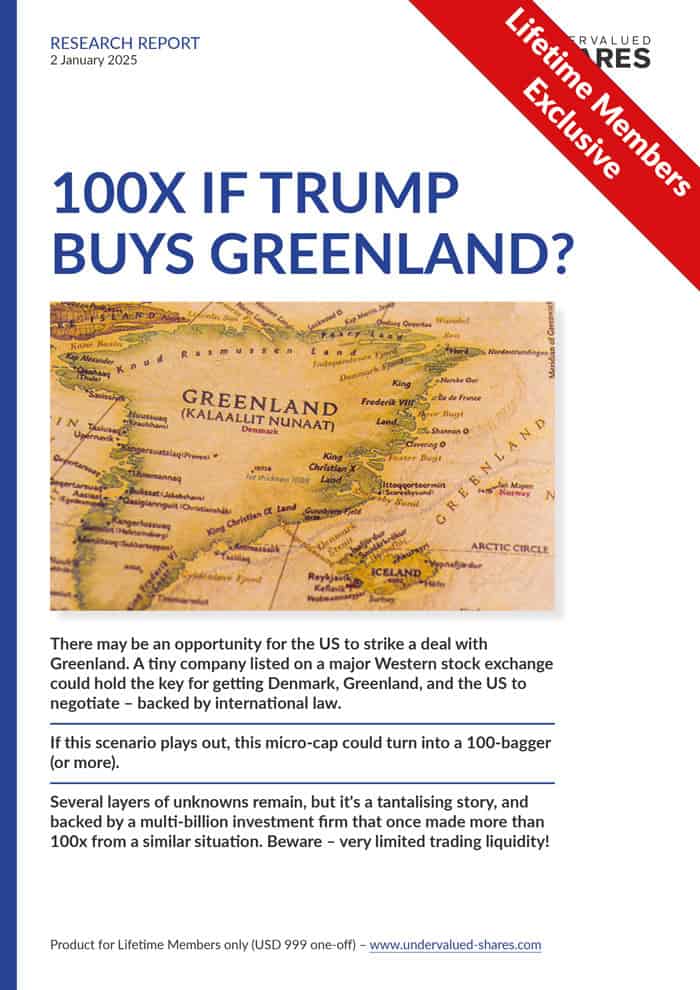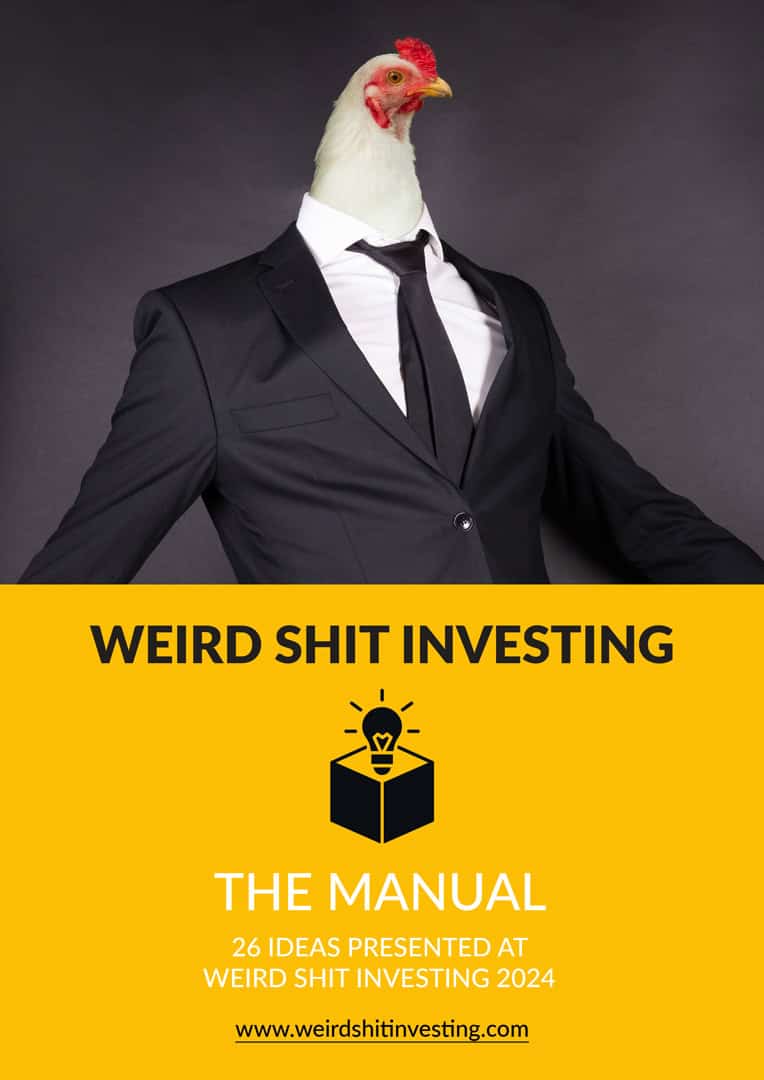Chris even helped the family to create a constitution for their multi-generational wealth.
Hired for the job at just 28 years of age, Chris is now more firmly in the saddle than ever. By many measures, he is a remarkable outlier among investment managers.
What can private investors learn from Chris' approach to investing, and why may now be the time to pay close attention to his strategy?
Undervalued-Shares.com had an opportunity to pick Chris' brain. The following is a transcript of a recent conversation at Broyhill Asset Management's headquarter.
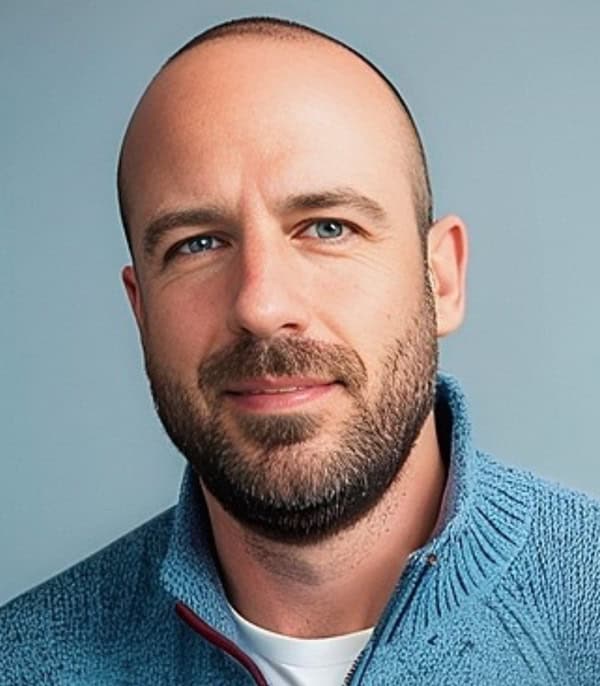
Chris Pavese.
Swen Lorenz: You have spent the last 19 years looking after the fourth generation wealth of a well-known family of furniture makers in the South-eastern US, the Broyhills. Previously, you had worked in the finance sector of New York. What catalysed the change from Manhattan investment management to North Carolina wealth management?
Chris Pavese: I started my career in the late 1990s. At the time, J.P. Morgan had maybe 12,000 employees, compared to 240,000 today. It was a prestigious investment bank with a long, rich history in America going back to John Pierpont Morgan bailing out the Fed during the Great Depression. It was a great place to start a career.
However, it was not necessarily great timing to start a career in finance in the late 1990s. Within a few years, J.P. Morgan had merged with Chase Manhattan in what was then one of the largest bank mergers ever, and then it merged with Bank One. This made it a much different organisation when I left than when I joined. It was a great place to learn how to analyse securities, but there came a point where I was ready for a change.
I got connected with someone that was looking to make the first external hire for the Broyhill family. Paul Broyhill, the family's patriarch, was 81 years old. I ended up having a great working relationship with him for almost 20 years.
The family were looking to institutionalise their investment process to some degree, and they were looking externally for that person. After several interviews and getting to know the team, they hired me for the job!
SL: Would you say there was something in your own upbringing and personal life that made you the ideal candidate for this position?
CP: In hindsight, I say it is funny why an Italian immigrant kid from New Jersey was a good fit for this Southern family with a rich history in the furniture business going back generations. I wouldn't have guessed it then, but 20 years later, I'm still sitting in the same seat.
The family built their wealth in the furniture business, which they then sold in 1980.
From 1980 until today, the family's investment objectives were, in this order:
- Preservation of capital.
- Income generation.
- Moderate growth, after we checked the first two boxes.
I think that first point – preservation of capital – is what made me such a good fit.
I was raised by a single mom. I remember her vividly clipping coupons out of the paper every Sunday morning.
I would say that an average middle-class upbringing in the States pounded into me over and over the value of a dollar and the value of hard work. This naturally ties in well with value investing, our focus on downside protection, and the Broyhill family's focus on capital preservation.
SL: There are 50,000 investment funds out there. I regularly go to conferences where value-orientated fund managers present and struggle with differentiating between them. How is your strategy different?
CP: Very importantly, we are not your typical statistical value investor.
What do I mean by that?
We are not just buying stocks with low price/earnings ratios or low price-to-book values. Nor is our mind set on buying low-quality businesses that are trading at cheap multiples.
What we do is we try to invest in mispriced assets, with limited downside risk and material upside potential. Others in the industry call this "asymmetry".
And when we find those opportunities, we do enough research to justify putting a good chunk of capital behind them. We typically run a very concentrated portfolio, and we complement this strategy with some more special situation and event-driven work.
SL: Something that stuck in my mind when reading your deck was how you performed in 2022. Your benchmark (the MSCI ACWI) finished the year at -18%, yet your portfolio was +2.2%. Was that luck, or was it your strategy paying off? Presumably the latter, but explain to us how you did it?
CP: I would say it was probably a little of both.
Surely, we did not have a crystal ball pointing to market chaos in 2022 after the run they had in 2021. We often like to say it's impossible to accurately and consistently forecast the future, either in investing or any other field.
But it is very possible and much easier to identify and pay attention to where we are in a cycle.
We were in the period after COVID-era stimulus, which had pushed everything from GameStop to Bitcoin and other speculative assets through the roof. It was clear that risk tolerance was stretched to the upside, and sentiment was also stretched to the upside. A lot of businesses across various industries and sectors were overearning, and they traded at peak multiples of those peak earnings.
This will make you understand why we were cautious.
As I had just mentioned, we are also looking for special situations and event-driven investments.
Depending upon the opportunity set available to us, we will occasionally look for opportunities that are less correlated to the overall ups and downs of the markets.
There was an element of luck in that the largest equity position of the firm in 2021 and 2022 was our investment in Activision. The company was in the process of being bought out by Microsoft.
The risk/reward on that investment was not driven at all by whether or not the market was going up or down. It was just a function of whether Microsoft was going to be able to close the deal.
The market was saying that it was basically a coin toss, i.e. 50/50.
However, we thought the odds for the deal closing were more like 80-90%.
This was a case of the market mispricing the opportunity.
That deal did close, and our correct assessment of the situation combined with a significant overweighting certainly helped our performance in 2022.
SL: What led you to believe that the odds were so much higher than what the market believed? What research and analysis work did you do that created those insights and that added value?
CP: Michael Mauboussin is a prolific author and someone we read regularly. He has written a lot about "inside view" versus "outside view".
Good forecasters are able to step back from a specific situation and look at the bigger history.
This is also a concept that was discussed in Philip E. Tetlock's book "Superforecasting: The Art and Science of Prediction".
For example, today you could argue that Nvidia is cheap. We don't necessarily have a view on the valuation of Nvidia, but the bull case would be that Nvidia is cheap on forward earnings. It's trading around 30x earnings today, which is nothing compared to where things like Cisco and Amazon were trading in 1999 and 2000.
The problem there is that consensus expectations are somewhere in the neighbourhood of 50% revenue growth for the five years through 2027. People that are looking at Nvidia today are really just looking at Nvidia and say "Look, the runway for AI is massive!"
We, however, would go and look at the history of thousands of companies throughout US history. How many of them have managed to compound at that rate for five or more years?
That number is minuscule. It's probably near zero.
We would lean more on that fact than to try and guess the course of any one particular company.
Now, you can do the same thing with merger arbitrage!
In merger arbitrage, historically over 90% of announced deals do close.
That's our starting point, and we adjust from there.
On the other hand, the market looks at the political climate and worries about the FTC and the government of the day being anti-tech or anti-big mergers. The market believes there is no way that it is going to close.
That's why the odds end up being seen as 40 or 50%, while we adjust down from 90% as a starting point.
The other important point is that we are looking at this from a stock-specific standpoint and taking into consideration the valuation. The last time we had a position in the portfolio that was similarly overweighted was when AT&T was buying Time Warner. The valuation of Time Warner was such that had the deal fallen through, we would have been happy to stay invested and expected to double our money in three to five years.
In summary, what gave us conviction to invest heavily in both situations was our edge is in valuing assets and identifying when they're mispriced. We are not merger arb investors. We are value investors through and through.
So, it really didn't matter whether our assessment of the likelihood of the merger was right. It would have stung a bit in terms of short-term volatility had we been wrong, but it really didn't matter in terms of the ultimate outcome in our mind if they won or lost the case.
It was kind of heads we make 20, 30% in six to 12 months, and tails we make hopefully 2x in three to five years, which is typically what we're trying to underwrite to.
That seemed like a pretty good trade-off!
SL: Would you say that being located where you are and not being near Wall Street improves your ability to take this kind of independent view?
CP: Initially, I moved from New York to the metropolis of Hickory-Lenoir, North Carolina, where I was for about 15 years.
Today, we are in Charlotte, North Carolina, one of the 25 biggest cities in the US. That's good middle ground between mid-town Manhattan and the Blue Ridge Mountains.
Being separated from New York and the group think amongst the hedge fund and investment community is certainly an advantage.
I like being able to plug in to that community. For example, we had two calls today with peers getting up to speed on names. It's important to plug in and get a sense for how other people are thinking about a situation.
But I think when you're surrounded by those other people non-stop, it's harder to separate yourself from those opinions.
SL: We jointly hosted a dinner for investors in Washington, DC. I loved how you brought up the example of McDonald's to put today's Magnificent Seven mania in perspective. From 1972-1980, McDonald's grew revenues 24% annually. Yet, the stock declined 72% from its peak. Tell us what investors navigating today's markets should learn from this example?
CP: That was an example we gave to show that great businesses aren't always great investments.
Ultimately, it's the price you pay that matters.
During the 70s, McDonald's was part of what is now referred to as the Nifty 50. The business was trading at multiples in line with some of the higher multiples in the market today. The business continued to perform exceptionally! It was growing sales and earnings 20-25% annually for the next decade.
But the stock still shed almost three quarters of its value because the price people were paying already more than reflected that growth.
Investors must keep in mind that just owning the best businesses in the world or the fastest-growing business in the world isn't necessarily going to translate into the best investment performance.
The ultimate point we are trying to make is that the price you pay matters.
Today, given the discrepancies and divergences we're seeing in the market between the largest 10% of the market and the rest are wide enough that we don't have to figure out if the Mag 7 is overpriced or setting up for a significant correction. There is simply enough value elsewhere in the market that you don't have to figure that out. There are just easier investments in our opinion.
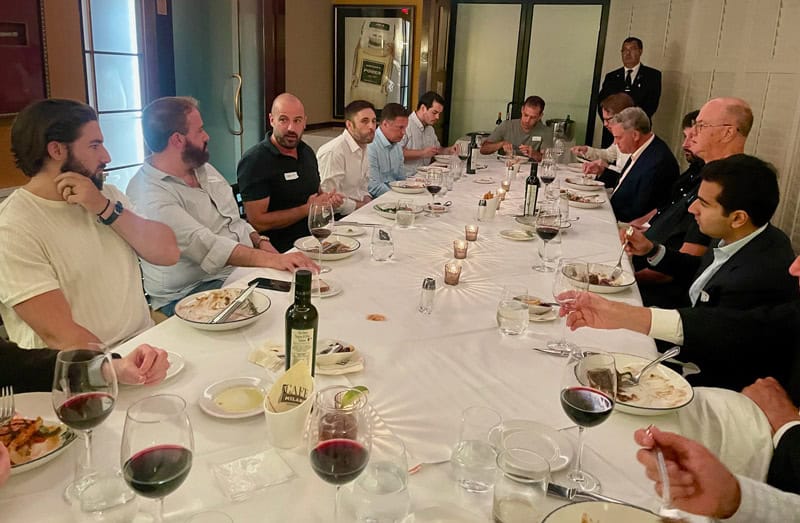
Chris speaking at a dinner with Undervalued-Shares.com readers in Washington, DC.
SL: By now, everyone will be curious about your current top investments and the rationale behind them. Which one would you like to share first?
CP: I should start with the largest. We've been invested in Philip Morris International (ISIN US7181721090, NYSE:PM) for some time. It is still the largest position in the portfolio.
Philip Morris International's operational headquarters are in Switzerland, but the shares trade on the New York Stock Exchange. The stock is included in the S&P 500, but in terms of the index weighting, it's less than 50 basis points. We're a good bit higher than that in our allocation.
What do we like about the company?
It's a great example of where you've got a core business that the company has been known for historically. That business is selling Marlboros to the rest of the world, meaning to the rest of the world outside of the US and China.
However, for the last five years or so, they have basically reinvested all the CapEx into developing a portfolio of smoke-free products. Those products have been growing at 20-25% annually for the last five+ years. They now make up nearly 40% of Philip Morris International's sales. In a few years, they will be the majority of the company's sales.
Today's stock price is equivalent to around 16 times next year's earnings estimates, which is a 20% discount to the market. I don't think the market is properly giving Philip Morris International credit for what will in the very near future be the majority of its business.
Part of the reason why tobacco has been so cheap has been this move towards ESG funds. Just in Europe, several trillion dollars in assets had signed a pledge that they will not own tobacco. Obviously, when you have all that capital coming out of tobacco names, that's going to put pressure on the shares and put pressure on the multiple.
Our view was that ESG is highly qualitative.
Depending upon who you ask, they're going to put more focus on the "E" or the "S" or the "G".
We thought it was only a matter of time until those trends started to reverse.
And when they did, some of that money would naturally flow back into tobacco.
We thought you could see something like we saw in energy stocks back in 21-22. When oil stocks were the leading sector in the market, the number of ESG funds that owned oil stocks tripled during the year.
This year, believe it or not, tobacco is outperforming the NASDAQ.
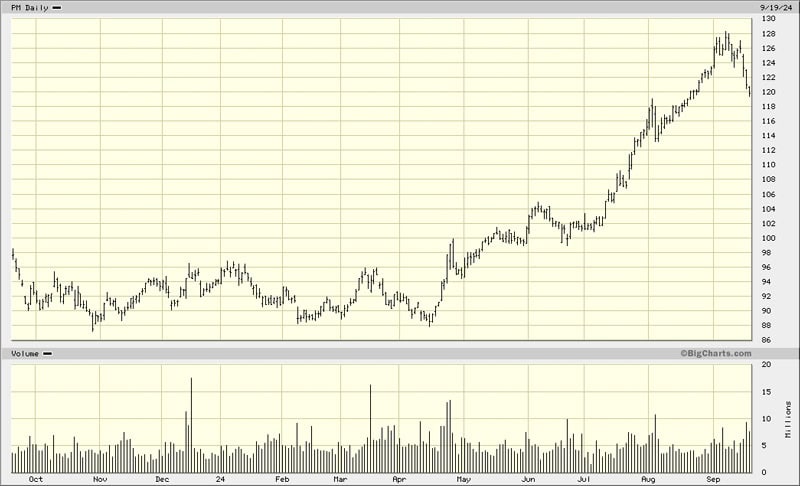
Philip Morris International.
Once folks see the value in tobacco and see the performance that they're leaving on the table by not owning them, I wouldn't be surprised to see some of those ESG funds make an excuse to own the sector, and when they do, the obvious choice will be PM, who is leading the industry's transition to reduced risk products.
SL: Let's move on to the second position you want to talk about, whether that's the second-largest or any other that you would like to highlight.
CP: We run a global portfolio. Given our views on the overall US market and the concentration in the market, I think it makes sense to highlight a position that is outside of the S&P 500.
A relatively newer investment is Reckitt Benckiser (ISIN GB00B24CGK77, UK:RKT), a GBP 30bn consumer company based in the UK focused on health, hygiene and nutrition products.
A lot of people probably don't know the name Reckitt, but they probably know the names Mucinex or Lysol, which are two of its main products. Mucinex is a cold and flu relief medication, and Lysol is a disinfecting product. These guys own the number one or number two brand in 15 global product categories that they compete in.
Shares have been under pressure for a number of years due to a number of factors, such as a lot of management changes and a lot of reporting changes. Then things just went from bad to worse when they got caught up in a legal dispute. That dispute shaved roughly 30% off the company's market cap in early 2024.
We thought that was overdone.
This is the sort of situation that we've invested in historically. Some of our more successful longer-term investments have been made in the wake of a litigation overhang that has clouded the operating fundamentals of the rest of the business.
We were able to buy Reckitt at a valuation that the company had not seen since the financial crisis. The play there is once the cloud of uncertainty and the litigation overhang start to fade, the stock should rerate in line with peers.
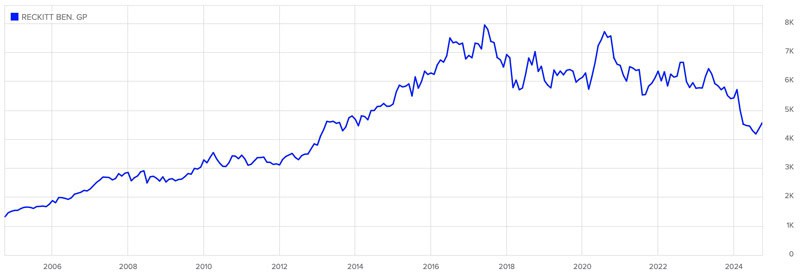
Reckitt Benckiser.
It is also a great example of the divergence and the gap in US valuations and the rest of the world.
We own Reckitt at roughly 12 times earnings. You can look at US peers like Procter & Gamble (ISIN US7427181091, NYSE:PG) and The Clorox Company (ISIN US1890541097, NYSE:CLX), which sell the same type of products into the same type of product categories into the same end markets. Procter and Clorox trade more like 25-30 times earnings today. So, you're literally 2x the valuation just because it's a US listing. I'm exaggerating a bit as there are other factors impacting the relative valuations, but that's a big part of it.
The market concentration in the US right now and the concentration at the top end of the S&P 500 are creating a lot of opportunities elsewhere.
SL: Many of my readers tell me that they like Undervalued-Shares.com because of its curiosity to explore lesser-trodden paths. You and I share an interest in the role that personal curiosity plays in investment management and ideas generation. To find investment ideas that Wall Street has overlooked takes a certain curiosity. How does curiosity play into your work?
CP: My team has the freedom to pursue interests that pique their curiosity, and in slightly more creative ways than maybe other firms can because we are relatively unconstrained.
Everyone in every industry is better at what they do if they enjoy what they're doing. If you are digging into an industry that you just you have zero interest in, then regardless of how big the investment opportunity is, you're never going to get there. You need to have that intellectual curiosity to drive you, to keep digging and digging and digging and digging.
We like to have fun doing what we are doing – and we should, because there's a lot of times this job is not fun!
Making sure we can enjoy the time we have in the industry, the business, and the office day to day is super important.
Whether it's something I am looking at or it's something I hand off to the team, I try to line up ideas with things that I think are going to be of interest to someone with intellectual curiosity.
For example, next month we are sending one of our analysts to one of the largest pest control conferences in Denver, Colorado. She's literally so fired up about the industry, she has suggested we start a pest control franchise on more than one occasion. Quite frankly, it's more this kind of weird stuff than AI chips that gets our attention.
SL: The family you have been looking after will be keen on risk mitigation. With that in mind, what do you consider your sweet spot for portfolio concentration, and why – both in terms of the number of names and percentages?
CP: There's plenty of research out there that would show you get 80% of the benefits of diversification once you hit seven or eight names in the portfolio. You are at 90% or better once you approach 20.
I think that's a pretty good starting point.
Anything beyond 20 is essentially a recipe for mediocrity in terms of performance. The more and more names you get, the closer and closer you start to look like the index. You might as well just own the index.
There is also plenty of data out there that shows that the best strategies and the best track records over the longest periods of time have been built by managers that were willing to concentrate on their best ideas and that had very high "active share". Active share is a measure of how much a manager differentiates relative to a benchmark.
It's not scientific at all, but our sweet spot is ten to 20 positions in the portfolio. It's a combination of personal preference and the comfort level I have developed over the years.
I found that once we get down towards ten, I start losing sleep because I feel like we're overly concentrated. If we then get one thing wrong, it could hurt a good bit.
Once we start creeping up towards 20, I start losing sleep because I feel like I don't know the names as well as I should. I'd like to know as much as I can about everything in the portfolio.
In terms of concentration, that's how we think about it.
How we size positions is driven by the probability-weighted expected return.
For every position in the portfolio, we have fair value estimates. Generally, we look at what we think a business is going to be worth three to five years out. Also, we are assuming that it's going to be in a normalised type of environment in three to five years.
We have an upside case and a downside case, and we put probabilities on both of those and that spits out a probability-weighted expected return.
We then rank the entire portfolio in addition to everything in the pipeline on probability-weighted expected return.
In terms of how that then lays into risk mitigation and capital preservation, I think that's really just common sense.
Obviously, you're not going to get diversification benefits from seven names if you own the Mag 7, because basically you own one trade.
Beyond thinking about industry and sector concentration, it's also thinking about the types of investors that are in these stocks, right? For example, even if you owned seven names across seven different industries, if they were very crowded hedge fund holdings, you still probably have one big risk that correlates across the portfolio.
It's about being thoughtful about how we put these pieces together.
SL: How would you summarise the key challenge that investors are facing in today's market – and the opportunities that stem from it?
CP: What we're seeing in the market now is increasing concentration. It's fewer and fewer names driving the market higher.
That's rare, but it's not unprecedented.
We have seen this degree of concentration and crowding in the late 1920s, in the 1970s, and in the late 1990s. And we're seeing it again today.
If you look at any of those periods where you've had such extreme concentration and extreme performance at the top of the S&P relative to the bottom of the S&P, it has almost always historically been followed by extreme underperformance of those same stocks that were driving the market higher.
We feel very strongly and very confident that over the next one, three, five+ years, the rest of the S&P, so the other 493 stocks in the index, or even stocks outside of the index are going to do better than overly concentrated cap-weighted markets.
If you have exposure to the S&P 500, if you have exposure to the Nasdaq or the Mag 7s, what's the downside in complementing that with a concentrated basket of value equities?
Our verified track record at Broyhill goes back almost a decade. That entire decade, we have been operating with a headwind in terms of having owned almost no tech, having had half the portfolio outside of the US, and having had a value tilt.
If you've done any one of those things, you're starting off below the S&P. We have done all three of these things, and our performance is relatively similar to the S&P over those last ten years. That's despite all those headwinds. As an aside, we think the MSCI ACWI and ACWI Value – global indices – are more appropriate benchmarks given the nature of our portfolio, and we are several percentage points above each annually since inception. But since everybody knows the S&P, it's generally an easier reference point.
Over the next ten years, it's hard to see another such period where those headwinds are that strong for us.
If they reverse, which they always have historically and because everything moves in cycles, we should look pretty good over the next ten years.
And even if we are wrong, I still think it makes sense to diversify away from what is the most crowded trade in the market right now.
What we are saying is the best way to manage risk in a momentum-driven market is to basically rebalance away from what has worked towards what hasn't.
The pricing available today is just exceptionally attractive for certain pockets of the market relative to the top of the market.
SL: The day before we did this interview, I had the opportunity to meet Hunt Broyhill, who today is the patriarch of the Broyhill family. It is remarkable and worth pointing out that they initially hired you to run the family office's investments. However, two years ago, they allowed you to convert the operation into an independent investment management business that carries the family's name. The family are now a client. It was very good to see how the two of you were very comfortable and happy with each other after 19 years. Hunt even credited you with having helped them create a family constitution of sorts when it comes to the investment policies and the investment strategy. Do you know if they have planned a big party for you in 2025 when you're celebrating being 20 years with them?
CP: We should have asked Hunt when he was here yesterday. I'll leave that to him!
SL: Do you have a short piece of advice for anyone who is currently invested in Standard & Poor's ETF, Vanguard Mutual Fund or some other benchmark-hugging fund?
CP: There has rarely been a better time to trim momentum driven winners in favor of the ignored, undervalued, more defensive sectors of the market.
SL: If someone wants to get to know you better, there's the Broyhill Book Club. What's that about, and why do you think that has become such a popular service?
CP: When I started at J.P. Morgan, it was the late 1990s. The Internet was becoming a thing. We had email, and we got online. But the reality was still that you didn't have easy access to letters from the smartest fund managers in the world. In these early days of the Internet, you couldn't turn to a podcast to learn about animal fat or the music industry. You couldn't just sign up for a free Substack to learn from some of the sharpest thinkers in the world.
Everything I learned in the first decade of my career was funnelled through this J.P. Morgan lens. Fast-forward a bit, I was 28 years old and sitting in what was an old country club in Lenoir, North Carolina, at the Broyhill family office and thinking "Okay, I no longer have that funnel from J.P. Morgan."
I'm going to have to start thinking for myself in terms of shaping, refining, and developing my investment philosophy. The best way to do that is just learning from everyone else. I love the saying "Standing on the shoulders of giants."
You may be surprised to hear that when I was younger, I was never a big reader. I don't think I read a single book for pleasure other than what was required at any point in my education.
The first time I picked up investment books were for the CFA.
At some point when working for the Broyhill family office, almost ten years ago, I decided "You know what? I'm going to read a book a week and just kind of see where that goes."
I read a book a week and towards the end of that year I thought I should probably do something to catalogue this work.
We put together a short PowerPoint that we pushed out. It contains the "Book of the Year", the "Author of the Year", a few other sections and an overview of everything I have read. You can download the 2024 edition here.
The funny thing that happened is it just became second nature. I normally start and end every day with anywhere from 15-60 minutes of reading.
Sometimes it is investment related, but more often it isn't.
And I still track everything we are reading, and I share my notes with the team.
Also, there is rarely a time that I'm reading something that I don't have someone come to mind that I want to send a copy to. I don't think I have ever bought one copy of any book. I find joy in sharing something I consider very personal. I love how reading a book helps you connect with friends and network with other folks.
The other nice thing about reading is that I've gotten to a point where there is probably half a dozen to a dozen books a year that I am re-reading. You learn different things from the same book every time you read it, and particularly at different periods in your life.
And it is just fascinating to re-read something that good several times over.
SL: High-stakes investing decisions come with a lot of pressure and stress. When Chris Pavese is not busy researching and building investment cases, what does he do to enjoy living in the Carolinas?
CP: I think I boiled this one down to three Ms: motorcycles, mountains, and Muay Thai.
Honestly, I didn't even realise there were mountains in North Carolina before moving here. Within a month or two of moving to North Carolina, I was introduced to the Blue Ridge Parkway. The first thought that went through my head was "I really need a motorcycle if I'm going to live here."
Believe it or not, I think riding a bike is very meditative.
You can't focus on anything else other than the road in front of you. So, I'm not thinking about valuations or disinfectants or anything else relating to my investments.
I'm just thinking about riding.
And there is something about the changing weather patterns and even just the microclimates through the mountains. It's just a beautiful experience.
So, that's mountains and motorcycles checked off.
Muay Thai because I have always had an interest in martial arts. I have been engaged in one form or another of training probably since high school.
Moving to Charlotte in 2019, I decided to pick that back up. I discovered a legitimate Muay Thai community here.
It's really hard to think about and complain about being down relative to the market for a day or for a month when you're taking knees to the rib cage or a kick to the head. The portfolio is not the first thing on your mind at that point. So, it's a good way to unplug.
SL: Thank you for this insightful conversation.
For more information about Broyhill Asset Management, visit www.broyhillasset.com or email [email protected].
Internet leader at a bargain price
The world's leading Internet companies tend to be hugely profitable, and their stocks valued at a premium.
Once in a while, though, you can buy into them at a bargain price – such as Meta and Spotify in 2022.
Who could follow in their footsteps?
The latest report from Undervalued Shares has identified another global Internet leader that is currently available at a bargain valuation.
If you missed buying Meta or Spotify in 2022, this one is for you.
Internet leader at a bargain price
The world's leading Internet companies tend to be hugely profitable, and their stocks valued at a premium.
Once in a while, though, you can buy into them at a bargain price – such as Meta and Spotify in 2022.
Who could follow in their footsteps?
The latest report from Undervalued Shares has identified another global Internet leader that is currently available at a bargain valuation.
If you missed buying Meta or Spotify in 2022, this one is for you.
Did you find this article useful and enjoyable? If you want to read my next articles right when they come out, please sign up to my email list.
Share this post:


